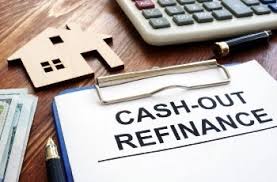Rate-And-Term Refinancing Vs Cash-Out Refinancing
When done under the right circumstances, refinancing a property can be a smart financial move. Regardless of the type of refinancing you opt for, the process involves replacing the property’s existing mortgage with a new one, often with different terms that better suit the investor’s current financial situation.
However, not all refinancing opportunities are the same. This article will compare rate-and-term refinancing with cash-out refinancing, so you can decide which is best for you.
What Is Rate-And-Term Refinance?
Rate-and-term is the most straightforward refinancing option, which involves simply trading a property’s existing mortgage with a new one with better terms.
In this case, no money changes hands – the only exception is any loan-associated fees. The mortgage doesn’t actually increase.
What Is Cash-Out Refinance?
Cash-out refinance does involve the exchange of cash. Here, the old mortgage is replaced with a new, larger mortgage (the price increase depends on the property’s value increase).
The property owner can benefit from better loan terms, although the mortgage is now higher, and their repayments will reflect this. The benefit is that the difference between the old and new mortgages is paid to the owner in cash.
When to Choose Rate-And-Term Refinance
Rate-and-term finance is the best option if you want to focus on reducing the mortgage payments on a property by refinancing to a loan with better terms. You’re likely to get better terms if your credit score has improved or your financial situation has changed compared to when you initially applied for the mortgage.
Additionally, using this specific type of refinancing allows you to change the term of your mortgage, which has several benefits, depending on the situation. For instance, you might decide to switch a 30-year mortgage to a 15-year mortgage, at the expense of the higher monthly payments, to pay off the loan faster and save on interest.
When to Choose Cash-Out Refinance
The biggest reason why you might choose cash-out refinance is to access the equity you’ve built up in a property. You can use this however you wish, whether that’s making home improvements, consolidating debt, paying for education, or addressing other significant financial needs.
This form of refinancing means committing to higher mortgage repayments, so it’s not necessarily right for everyone.
When to Refinance a Mortgage
The best time to refinance a mortgage, regardless of the refinancing situation, is when interest rates fall below the current mortgage rate.
The rate needs to have fallen significantly enough that your money saved will be high enough to cover the fees and costs associated with refinancing.
Conclusion
Making the choice between refinancing and a cash-out refinance depends on your financial goals and needs.
Both offer very distinct benefits that mean that neither is the best option for everyone.
For people who want to reduce their mortgage payments and improve loan terms, a standard refinance might be the best option.
But for accessing a mortgage property’s equity for major expenses or debt consolidation, a cash-out refinance could be more beneficial.





